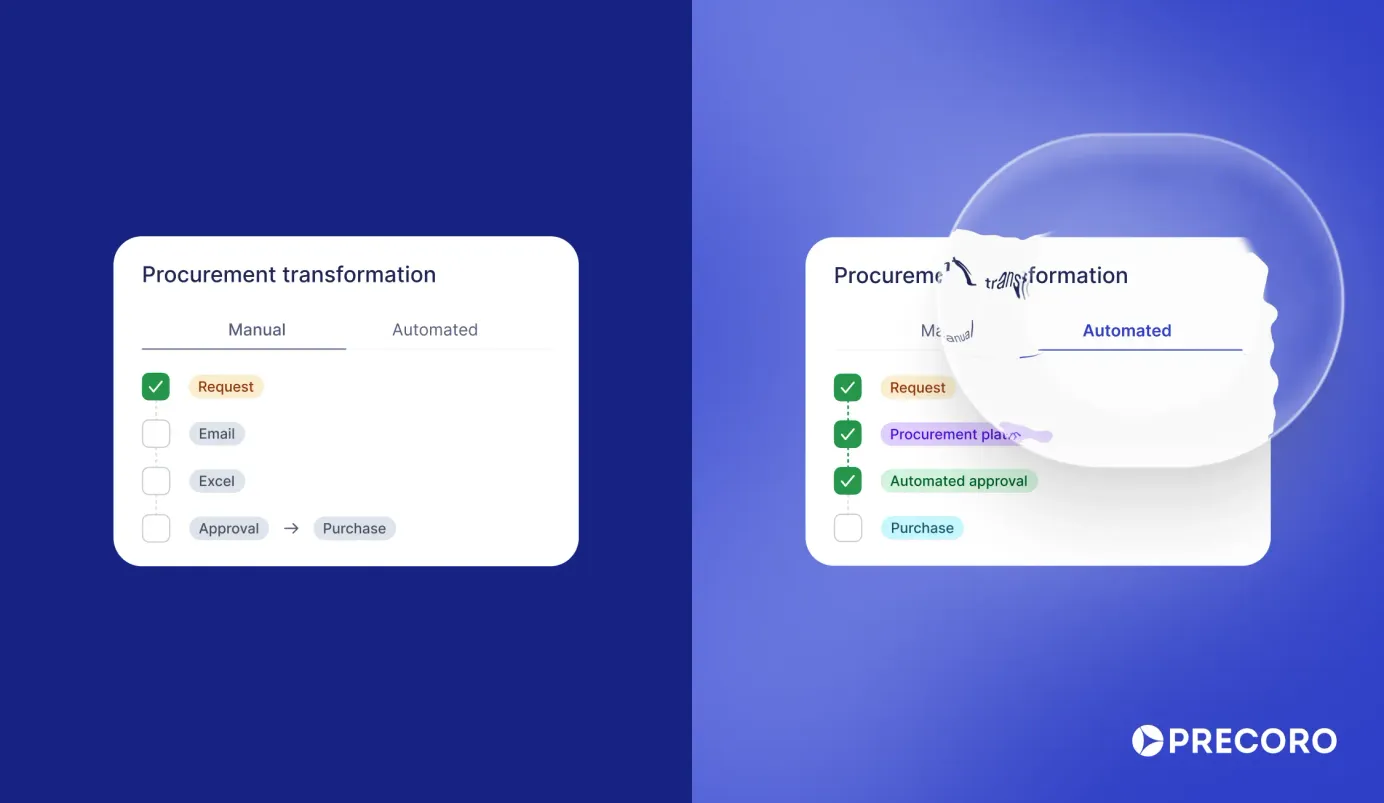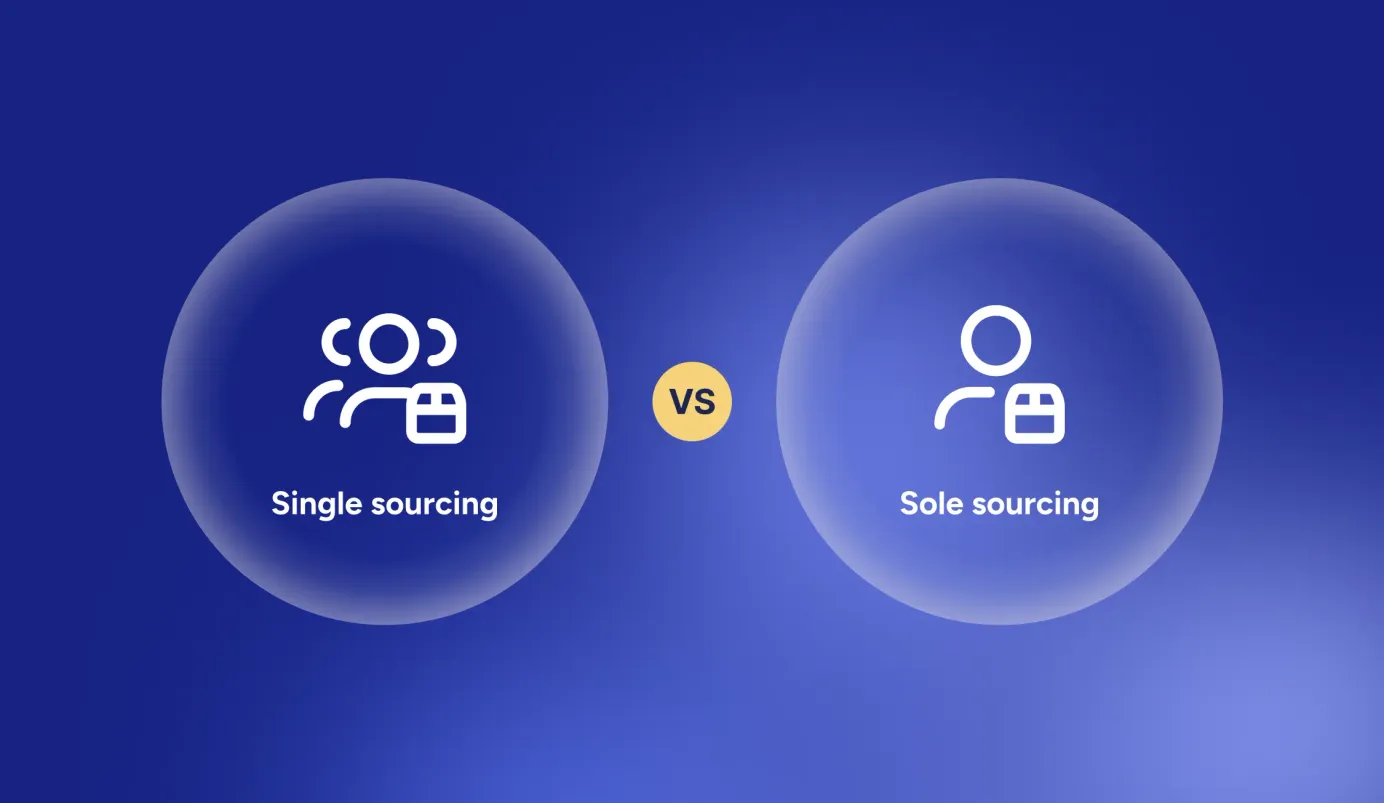
5 min read
8 Supplier Management Best Practices any business can implement
For anyone responsible for procurement in an organisation, supplier management is an inevitable area of responsibility. It can either make you a company's superhero or add extra headaches and purchasing risks.
For anyone responsible for procurement in an organisation, supplier management is an inevitable area of responsibility. It can either make you a company's superhero or add extra headaches and purchasing risks because poor supplier management leads to the following problems:
- Missed saving opportunities and not enough leverage in negotiating with new suppliers.
- Poor supplier performance due to the lack of oversight, analytics and clearly defined requirements.
- Inability to adapt to change in your organisation and scale fast enough.
- Anticipate and react to market volatility and price changes.
- Increased workload due to complex and ineffective process.
By building an excellent Supplier Management Process, a successful company can mitigate those risks and ensure that their supply chain is undisrupted and meets the KPI's.
Analyse your SRM Maturity level
Effective supplier management relies on the well-established process inside the organisation. In their study of Supplier Relationship Management, PWC devised a very complex and comprehensive Supplier Relationship Maturity framework that can help any company determine their current standing and pinpoint potential gaps in strategy, people, technology and processes.
At Precoro, we proposed a simplified framework that can help you evaluate your company's Supplier Relationship Maturity, coupled with best practices for each potential pitfall:

8 Supplier Management Best Practices for every process stage
1. Formulate business requirements
Procurement is not just about cutting costs and looking for the cheapest deal. Ideally, procurement should be business-driven and complement the overall company's strategy by proper and smart asset utilisation, mitigating risks, ensuring undisrupted supply and contributing to overall revenue growth. This can be successfully executed by well fostered cross-team communication and shared business goals. Once the procurement team understands the needs of the business, they will be able to avoid strategic mistakes in selecting new vendors or negotiating deals. Properly aligned business goals will also help with prioritisation and measuring the vendor performance.
2. Create and manage supplier database
Owning a detailed and up-to-date supplier database will be a great help in planning, saving money, selecting new vendors and maintaining good supplier relationships. It would be helpful to store the following information:
- Contact details
- Proposals and Contracts
- Information on Supplier Capabilities
- Invoices and transactional data
- Shipping coverage and supplier locations
- Supplier performance data and feedback
- Any other criteria that a crucial to your business
3. Segment your suppliers.
It is a great idea to develop a set of criteria to segment suppliers and prioritise your supplier selection and relationships based on those parameters. You can sort suppliers by size, type, potential future value, quality of service, deliverability speed, risk factors, etc. We recommend using The Kraljic Matrix as one of the most effective ways to implement accurate supplier segmentation.
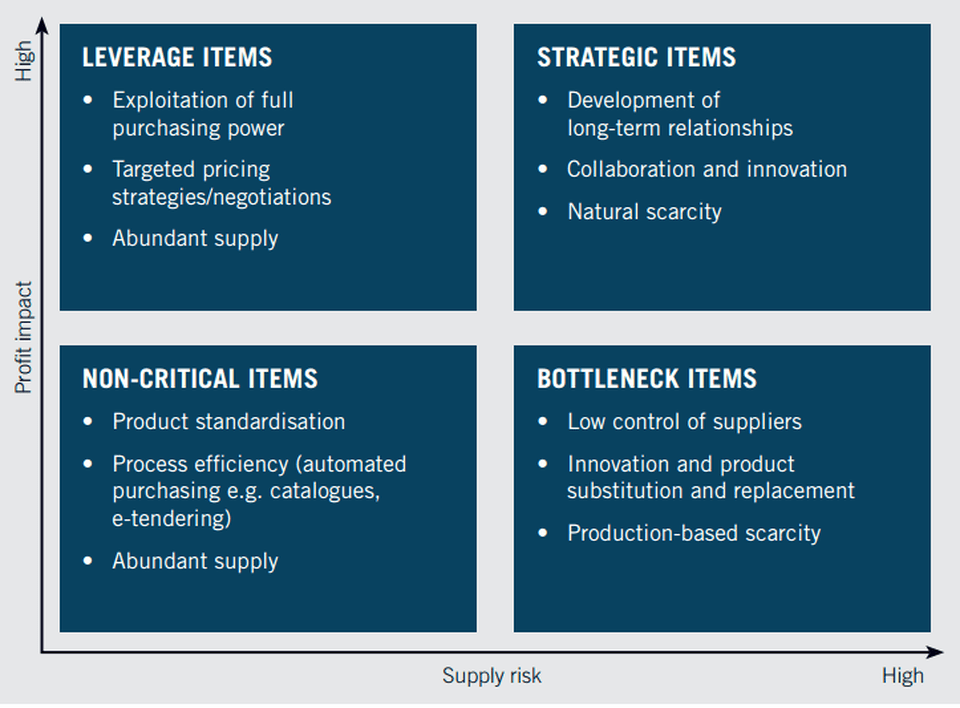
Once you implemented supplier segmentation, you will select the right supplier for every situation, depending on your business goals or specific objectives.
4. Raise Team expertise.
It is essential to identify areas for potential improvement and growth inside the procurement team and devise a plan of increasing individual competencies. This can be done by setting up an in-house training program, financing courses and creating a positive environment that will encourage people to share their knowledge and assist each other.
We've prepared a shortlist of courses and resources that can come in handy in raising the team expertise:
- Udemy: Procurement Basics: Supplier Relationship Management
- e-Learning courses from the Charter Institute of Procurement and Supply
- Procurement Leaders Resources.
- Coursera: Supplier management course from Rutger University.
5. Define responsibilities for each team member involved in SRM.
Since Supplier Management is a complex area requiring the involvement of many decision-makers or calls for other teams to participate in the process partially, roles and responsibilities get blurred. Decision-making is obstructed by unclear reporting sequence. It is wise to set up a clear and concise reporting chain and transparent workflow. Each team member should be aware of their responsibilities, and the level of their involvement should be well-communicated. It can help you ensure smooth operations and avoid internal conflicts. Alternatively, by mapping the workflows and responsibilities, you can evaluate your teams capacity and identify hiring gaps early on.
6. Implement a system for Supplier Management.
Bringing a vendor management system into the equation can help you build an efficient process and minimise communication gaps.
For example, in an advanced purchasing tool like Precoro, the procurement team can quickly raise purchase requests and create purchase orders that will be automatically mailed to the appropriate supplier.
On top of this, with this SRM software, you can:
- Store supplier information
- Store and manage supplier catalogs
- Order items directly from those catalogs
- Control budgets and create reports
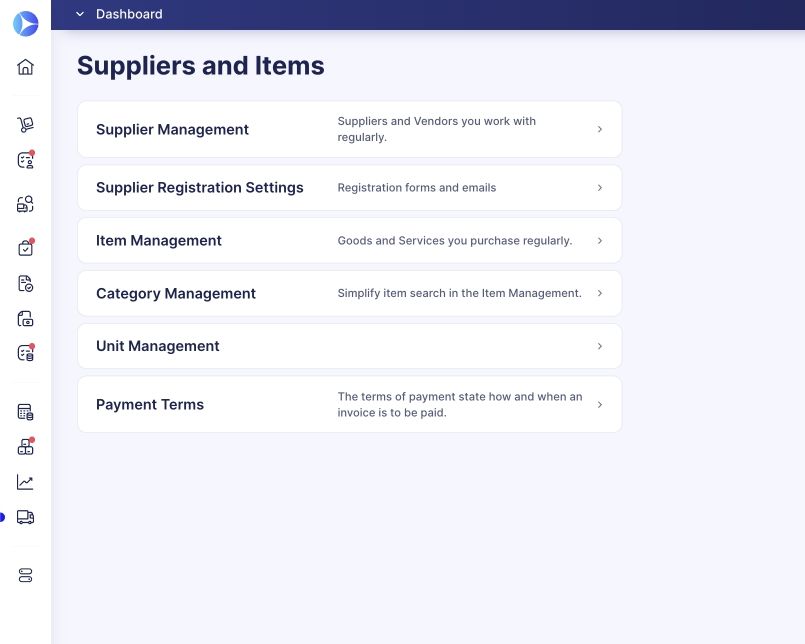
Your suppliers can also benefit from our built-in Vendor Portal, which can help suppliers to:
- Receive POs
- Send Invoices for the received orders
- Add comments and notes
- Upload Attachments
- Create and send RFP's
7. Monitor, control, and assess supplier performance.
The key to building successful and long term supplier relationship is in managing vendor performance. A transparent and structured evaluation system brings objectivity to your vendor relationships and reduces risks. It can also help you provide your suppliers with timely feedback and prompt them to act on it and improve their service.
One of the great ways to analyse supplier performance is by building a supplier scorecard.
A good scorecard incorporates the following elements:
- Alignment to your business goals
- Alignment with compliance and policies
- List of requirements for the supplier
- Tangible metrics to measure performance.
Below is an excellent list of potential metrics you can include into your scorecard, as suggested by Supply Chain Quarterly.
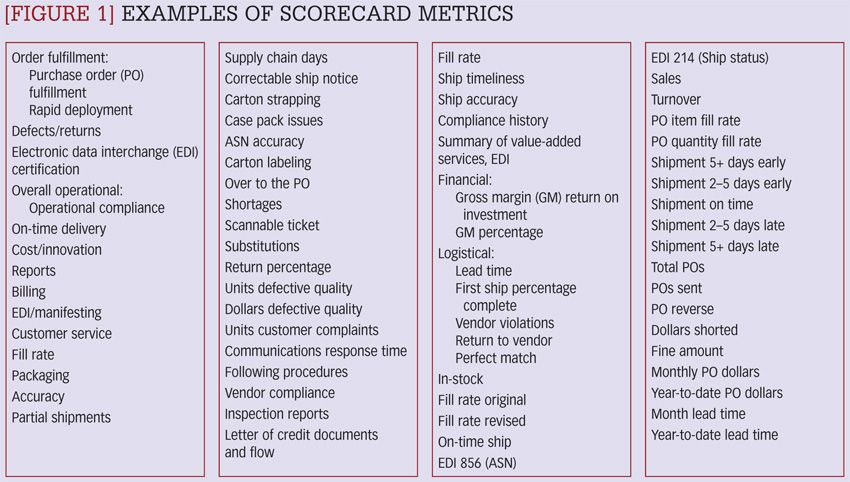
8. Perform a risk assessment and formulate a list of counter-measures
Supply chain disruptions have always been a crucial factor to account for, but lockdown and COVID-19 brought even more volatility and uncertainty into the mix of potential risks. Therefore, it is wise to identify potential disrupting factor early on and list according to their severity.
Identify strategically crucial suppliers, goods or services and work on a set of contingencies that could shield you from supply chain interruptions. Make sure your team knows how to act in those scenarios and can make fast and informed decisions.
It is a good idea to develop a Supplier Risk Assessment Program and apprise suppliers with this list mind. For example, SpendMatters proposes to include the following components into your Risk Assessment Program:
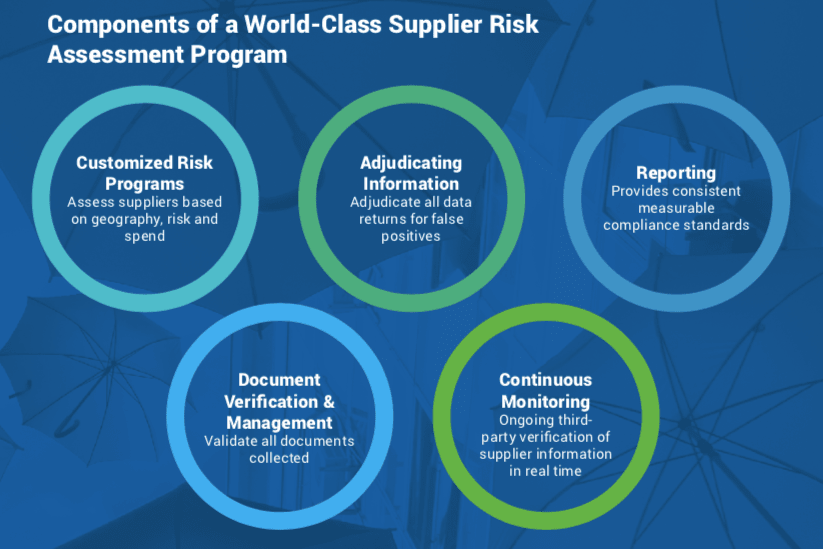
Conclusion
Building a solid Supplier Management Process and straitening your relationships with vendors can help your company thrive in the uncertain global environment. By assessing your SRM maturity and potential gaps in your process early on, you can improve your business resilience, increase profit, and make employees more productive.
Best practices for successful Supplier Management include, but not limited to:
- Formulating business requirements.
- Creating Supplier Database.
- Segmenting suppliers.
- Raising team expertise.
- Defining responsibilities for each team member involved in SRM.
- Implementing a system for Supplier Management.
- Monitoring, controlling, and assessing supplier performance.
- Performing risk assessment and formulating a list of counter-measures


